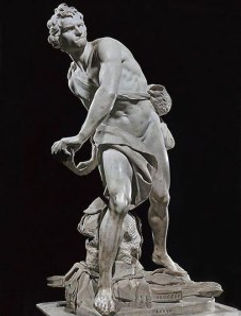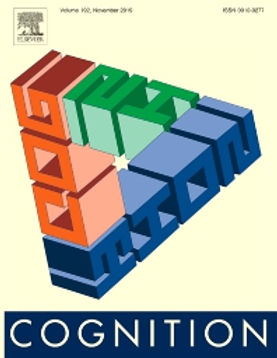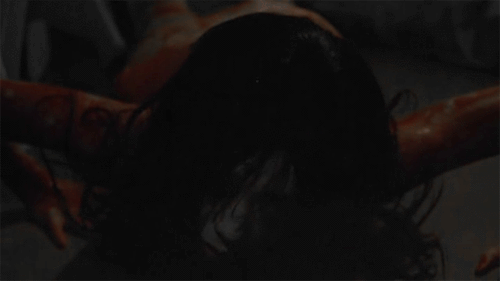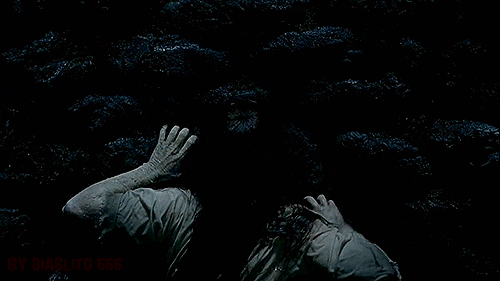Sword in the stone brief. Concentrating on the sword, Excalibur, instead of Arthur. Set in a forest (possibly Hampstead) early morning, different shots, possibly on the last shot an actor (who will play Arthur) walking towards the stone.
Week One
Prince, S(2010) "Through the looking glass: Philosophical toys and digital visual effects". Projects
Stephen Prince reports the importance of the marriage between cinema and science. Debating throughout this article whether visual effects are a valuable addition to the medium or not, as some believe that visual effects stand only for spectacle and therefor against narration. He then dives deep into the scientific origins of visual effects, exploring the original philosophical toy, the camera obscura, which would later lead on to the first optical illusion device, the phenakistoscope.
To close off the article, Prince breaks down two films and explains the purpose and importance of visual effects within these examples. First off how David Fincher used visual effects to recreate a 1970’s San Francisco in the Zodiac (2007) and secondly how he then used those tools to both age and de-age Brad Pitt’s character in The curious case of Benjamin Button (2008). We can safely say that visual effects would not succeed in creating realism and perceptual realism within cinema if it was not for scientific knowledge.


Stephen Prince is a professor of cinema in Virginia Tech’s School of Performing Arts and is the President of the Society for Cognitive Study of the Moving Image. He received his Ph.D from the Annenberg School of Communication at the University of Pennsylvania.
As well as being the editor of the prize-winning journal, Projections: The Journal for Movies and Mind, Prince has also written numerous highly regarded books about the historical, aesthetic and social and technological aspects of cinema.

The Camera Obscura is an ancient optical toy invented in the 19th century. In its most basic form it is, quite simply, a dark room with a small hole in one wall. On the wall opposite the hole, an image is formed of whatever is outside.

Some of the films mentioned in the article




Week Two
Manovich, L(1995) "Essays: What is Digital Cinema? ".
The pure definition of digital cinema is a constantly flexing and changing one, making it difficult to pin point. In this essay, Lev Manovich tries to do just that while diving in his train of thought. To get to a definition as clear as possible, Manovich first recalls the origins and role of early animation and cinema. He finds clear differences between early practical effects and modern-day digital effects: His point being that from the birth of cinema until the invention of CGI, raw film footage and practical effects had existed as a record and representation of “real life”. Whereas the introduction of digital film made raw footage just another material to be manipulated by techniques of visual effects to create an elastic reality. Manovich explains that methods used more than a hundred years on optical toys are still being used within the industry to this day such as “the loop”.
Throughout this essay, it is clear that without the techniques used in prehistoric cinema, digital cinema would not be where it is to this day.

Lev Manovich is a Professor of Computer Science at The Graduate Center, City University of New York, and founder and Director of the Cultural Analytics Lab. Born in Moscow, he studied fine arts, architecture and computer programming. In 1981, Manovich moved to New York and received his receiving an M.A. in Visual Science and Cognitive Psychology and later a Ph.D. in Visual and Cultural Studies from the University of Rochester. He is also a Author and writes about topics such as new media within old media

Group Task 1
Zabriskie Point (1970) directed by Michelangelo Antonioni and starring Mark Frechette, Daria Halprin, and Rod Taylor.
Cinematography was done by Alfio Contini and special effects by Earl McCoy.
Gravity (2013) directed by Alfonso Cuarón and starring Sandra Bullock and George Clooney. Cinematography by Emmanuel Lubezki and visual effects by Framestore.




Michelangelo Antonioni (29 September 1912 – 30 July 2007) was an Italian film director, screenwriter, editor, painter, and author. He is best known for his biggest success, the trilogy L'Avventura (1960),
The Night (1961), and L'Eclisse (1962). His work is known to be enigmatic and to avoid the“realistic” narrative in favour of character study and a vaguely metaphorical series of incidents.
Alfonso Cuarón (born November 28, 1961) is a Mexican director and screenwriter. Best known for Y tu mamá también (2001), Children of men (2006) and Gravity (2013). He gained an international reputation for his fluid storytelling in a wide range of genres.
Sherlock Holmes: A game of shadows (2011) directed by Guy Ritchie starring Robert Downey Jr and Jude Law. Cinematography by Philippe Rousselot and visual effects by Framestore.


Guy Ritchie (born 10 September 1968) is an English film director, film producer, screenwriter, and businessman. Lock, Stock and Two Smoking Barrels (1998), Snatch (2000), Sherlock Holmes (2009-2011) and The Man from U.N.C.L.E. (2015) are some of his notorious film. Ritchie is famous for his British gangster films.

Founded in 1986 in London, Framestore is a visual effects company and home to artists who work in film, advertising and content.
They are known for their work on the marvel cinematic universe, The Martian, Gravity, Blade Runner 2049 and so much more.
The clips from each of these films we saw in class all have something in common: Slow Motion. However it is used to express different things.
Film one: Zabriskie Point
As I watched the scene, I felt the feeling of loss and saying goodbye. As the house was exploding, personal items were projected into the air and Michelangelo Antonioni really concentrated on these items by using slow motion and different shots.
Film two: Gravity
In the second film, the scene that was shown was when the debris collides with the space shuttle. The mix of of the debris going quickly but the slow motion of space gave us this rush and wanting to survive yet still being in despair and longing.
Film three: Sherlock Holmes: A game of shadows
Guy Ritchie used slow motion to show off small details, such as the shot of the gun.
Visual Effects is commonly associated with the word "spectacle", and when we think of spectacle, we also think of illusions and tricks. Norman Klein, a urban and media historian who decribed illusionistic environments which are made to make you believe that you are in the middle of a protective narrative as "Scripted Spaces". Where there are scripted spaces, there is an interplay between power and illusions, especially when it is a branded space.

Norman Klein is an American critic, urban and media historian, and novelist. His work focuses mainly on the relationship between collective memory and power in urban spaces; the thin line between fact and fiction; and erasure, forgetting, scripted spaces, and the social imaginary.
Perspective within art is a technique to create an illusion of three-dimensions (depth and space) on a flat surface. By using perspective in your work, it can give it form, distance, and make it look "real." linear perspective was created by the architect Fillipo Brunelleshi and the first known painting to use this technique was The Tribute Money (right) by his friend Masaccio.


Flourished in Europe from the early 17th until the mid-18th century, Baroque is a cultural movement that is associated with the Catholic Counter-Reformation. The baroque style intended to impress, by using dramatic and bold realism. Gian lorenzo Bernini (left) was one of the leading artists and sculpture of this movement.



Still after a couple of centuries later, we can still see techniques to this day not just on paper but in the digital world as well. Forever creating illusions and spectacles for the public.
Week Three
McClean, S.T(2007) Digital Storytelling: The Narrative Power Of Visual Effects In Film.
London: The MIT Press
As a specialist in storyboarding and digital visual effects and having worked as a writer, director and script editor Shilo T. McClean examines and gives her insight into the history of computer graphics and how digital visual effects have changed films narratives. Starting with the history of computer graphics, and how it changed not only one but numerous industries. McClean explains how even something that was first used as a gimmick can grow to be one of the industries valuable tools. Not only did digital visual effects give filmmakers the freedom to expand their visual narrative expression and giving audiences a better experience, it has also become a key marketing product. Shilo T.McClean argues that with it becoming a key marketing product helping financially, visual effects supervisors and crew aren’t just responsible for the visuals but how much it appeals to the public in a way, which has led to more jobs within the industry.



Léon Guillaume Bouly (1872–1932), in 1892 patented the original “cinématographe“, a device capable of automatically reproducing motion by a series of photograph.
Three years later the Lumiere brothers, Auguste (1862-1954) and Louis (1864-1948), French inventors and pioneer manufacturers of photographic equipment, created a more efficient version of the cinématographe. It was not only a camera but, it was able to print and project the images and the brothers used film.
In 1895, Auguste and Louis filmed a 46 seconds film of the employees leaving the Lumière factory, naming it “La Sortie des ouvriers de l’usine Lumière” (1895). The footage would later on be referred as one of the first real motion pictures to exist. The film would be shown with other motion pictures filmed by the brothers in cafes around Paris.After making several movies about every day French life, in 1896 they had their first screening in London at the Polytechnic of Central London in Regent Street. They also opened Cinematographe theatres in Brussels, Belgium and New York.In 1900, they had invented a camera which took large-format 75mm films.By 1905, Auguste and Louis Lumiere had withdrawn from cinema and concentrated on inventing the first photographic colour process. They would later succeed in 1907 calling it the Lumière Autochrome. This would transform the world of photography and later cinema.

“La Sortie des ouvriers de l’usine Lumière” (1895)




"L'arrivée d'un train en gare de La Ciotat" (1895)
Georges Méliès (1836-1938) a french illusionist attended one of the Lumiere brothers demonstrations in Paris. Being an illusionist and a manager director of the theatre Robert Houdain, decided he could take cinema to a whole new level and would be the first to create a film with actors, animation, sets and special effects. In 1902, Georges created Le voyage dans la Lune , which was an international success and the first fictional film. He is also known as the father of special effects. Méliès used techniques stop trick photography, multiple exposure, time lapse photography, color painting negatives and persistence of vision to achieve his effects.


Eadweard Muybridge (1830 – 1904) was an English-American photographer, famous for his work in photographic studies of motion, and early work in motion-picture projection and the invention of the Zoopraxiscope (a device for projecting motion pictures).
Without his work on animal locomotion, motion pictures and cinema would not be possible,





The biggest misconception about animation is that it came after cinema however it was invented before. If it was not for animation, cinema how we know it would not be around today.
Week Four
Tinwell, A (2014) The Uncanny Valley in Games and Animation
Boca Raton, Florida : CRC Press
Angela Tinwell’s investigates the connection between the uncanny valley and Neurological science. Tinwell’s examination of human communication demonstrates the importance of mirror neuron activity in how we understand each other: mirror neurons are the source of empathy and facial mimicry in great apes and our species. As humans converse, they assimilate facial movements and emotional give always to show understanding. The author goes in depth into how this becomes a major problem for people with moebius syndrome, people who have had extensive plastic surgery, and AI. Both people suffering from moebius syndrome and people having had botox procedures lack the ability to move their facial muscles, therefore lack facial emotion. Although not a condition, AI lacks the advancement and understanding of human interaction needed to break out of the uncanny valley. Angela Tinwell raises the point that this theory can be used for more believable characters and performances in both animation and games.


Jason and the Argonauts (1963) directed by Don Chaffey and starring Douglas Wilmer and Todd Armstrong. Cinematography by Wilkie Cooper and special effects by Ray Harryhausen.
Pirates of the Caribbean: The Curse of the Black Pearl (2003) directed by Gregor Verbinski and starring Johnny Depp, Keira Knightly and Orlando Bloom. Cinematography by Dariusz Wolski and visual effects by Industrial Light and Magic.




Don Chaffey (5 August 1917 - 13 November 1990) was a British film director, writer, producer, and art director. Also known for Pete's Dragon, One Million Years B.C and the three lives of thomasina.
Gregor Verbinski (16 March 1964) also known as Gore Verbinski is an American film director, screenwriter, producer and musician. He is known for directing the first three films of the Pirates of the Caribbean film saga, The Ring, and Rango.

Founded by George Lucas in 1975, Industrial Light and Magic (ILM) is an American motion picture visual effects company. It is a division of the film production company Lucasfilm. There is also an ILM in London that opened in 2014. The company has worked on Pirates of the Caribbean, Sleepy Hollow, Star wars, Forest Gump and many more.
Between the two films there is a major difference in what techniques were used. The skeletons from Jason and the Argonauts were models filmed in front of the camera and stop motion was used for their movements. Whereas for the Pirates of the Caribbean everything was done behind the camera and digitally.
Again for Planet of the Apes, the 1968 film used prosthetics and the 2011 remake used CGI. John Chambers, the make up artist for Planet of the Apes (1968) would revolutionise movie makeup with his design of the apes and would later win an Oscar for his work on the film.
Planet of the Apes (1968) directed by Franklin James Schaffner. Starring Charlton Heston, Roddy McDowall, and Kim Hunter. Cinematography was done by Leon Shamroy and make up was done by John Chambers.


Franklin James Schaffner (30 May 1920- 2 July 1989) was born in Japan and was known for his directing and known to be "one of the most innovative creative minds in American television". He directed the Planet of the Apes, Papillon and Patton.
Rise of the Planet of the Apes (2011) directed by Rupert Wyatt. Staring Andy Serkis, James Franco and Freida Pinto. Cinematography by Andrew Lesnie and Visual effects done by Weta Digital


Rupert Wyatt (born 26 October 1972) is an English director known for his directing on the Rise of the Planet of the Apes, The Gambler and The Escapist.

Founded by Peter Jackson, Richard Taylor and Jaime Selkirk in 1993 in Wellington, New Zealand. The company has worked on Planet of the Apes, Game of thrones, The Hobbit trilogy, etc.
With advances in technology, visual effects have moved from being in front of the camera to behind it. Using computer generated imagery within VFX has made it quicker and easier for the artist to manipulate the image.

Created by In 1968 N.Konstantinov and a group of Russian physicists and mathematicians on a BESM-4 computer, Kitty would become the first computer animation of a character. This was done by using a programme that would print hundreds of frames using alphabet symbols that were latter filmed in sequence

Week Five
Gray, K ; Wegner, D.M (2012) ‘Feeling robots and human zombies: Mind perception and the uncanny valley’ Cognition, Volume 125, Issue 1
Kurt Gray and Daniel.M Wegner’s research tests the validity and cause of the uncanny valley with three experiments to see what exactly unnerves humans. The first experiment tested if a machine with a human like appearance attributes to the subject feeling uneasy. The second took away the human like appearance from the machine but kept the emotions and the third took away both. Those same experiments were then done using people instead of machines to understand if uncanniness could translate to humans as well. The author raises the point that humans accept the existence of robot as long as they function as intended (agency, not experience), hence the lack of human-like features on most commonly used robots. Gray and Wegner concluded that if a human comes across a robot or zombie and they had no experience or emotions then the subject would feel uncanniness as experience and emotions are fundamental for humans to connect.




Masahiro Mori, a professor of engineering at the Tokyo institute of technology, came up with the expression “The Uncanny Valley” in the 1970’s. The expression would be thrown into the public’s eye with the help of Mori’s published essay on the phenomenon. The Essay details how Mori discovered through his research that robots with human likeness impacted the observer’s affinity to them through their appearance.
By creating a graph with his findings, he observed where robots, prosthetic hands and other objects would be placed on the affinity and human likeness scale. Prosthetic hands would be placed deep in the valley, as they have a realistic human look however if we were to touch or shake the hand, we would feel the coldness and texture and the realisation of it being artificial would give us an eerie sensation, making us lose our affinity and making the hand uncanny (Mori, 1970).Mori would also add movement of the objects to his research and discovered that when an industrial robot’s hand is programmed to move like a human’s, we would feel affinity for it since visually it does not resemble a human yet when a prosthetic hand would move our feelings of uncanniness would grow causing the graph to change by intensifying the peaks and valleys due to movement.



In 1906, the first signs of the uncanny appeared with German Psychiatrist Ernst Jentsch’s essay “Zur Psychologie des Unheimlichen” (“The Psychology of the Uncanny” when translated from German). Jentsch would explain that the reason behind all feelings of uncanniness is intellectual uncertainty.
Austrian Neurologist Sigmund Freud would write his essay “Das Unheimliche” (“The Uncanny”) in 1919. Freud first explains the etymology of the German word “Unheimliche”, Freud takes the word Heimlich meaning familiar and explains that the word unheimliche is it’s opposite so the word’s definition would be something that is unfamiliar and creepy. As Freud explains “The German word unheimlich is obviously the opposite of heimlich, heimisch, meaning “familiar,” “native,” “belonging to the home”; and we are tempted to conclude that what is “uncanny” is frightening precisely because it is not known and familiar.” Jentsch and Freud both agreed that when you add something unfamiliar to something familiar you would get the uncanny. However, Freud’s conclusion behind feelings of uncanniness were due to the “return of something long repressed, which was once familiar”, such as infantile sexual desires.


We feel the Uncanny Valley when we see the characters from the 2004 film The Polar Express . Due to their design, the characters eyes appeared emotionless and when they should have looked sad or pensive, they looked threatening and creepy making them fall deep into the Uncanny Valley. The eyes are important to get right as we communicate our emotions through them. As a study published in the Psychological Science says “we interpret a person’s emotions by analysing the expression in their eyes, a process that began as a universal reaction to environmental stimuli and evolved to communicate our deepest emotions. So even if visually they look realistic there is still something unfamiliar to them.
Another case of where the phenomenon is present is in the 2006 film Rogue one: A Star Wars Story. Due to the Story line (Rogue One happens before the 1977 film A new Hope), Peter Cushing who passed away in 1994 was resurrected via Computer Generated Imagery (CGI) for his character Grand Moff Tarkin.



The Uncanny Valley can be extremely beneficial especially in the genre of horror. As viewers we want to feel scared and uneasy so for years, horror writers and filmmakers have used the uncanny alongside pareidolia to create suspense and creepiness in two major ways: by creating humanity where it shouldn’t be and removing humanity from where it should be.
The presence of the Uncanny Valley will forever be a reoccurring issue for designers especially as our obsession for realism grows as our technology both in film and robotics evolves and with that, it will be continued to be researched. For as much we have learnt about the subject, the Uncanny Valley will always remain questioned.
Week Six

Week Seven

During week seven, we went to visit Cinesite where we had a chat with Vfx supervisor Jesper Kjolsrud. He kindly answered our questions as well as talking from his own experience in the industry.
Cinesite was founded in 1991 and has over 25 years of experience working on hundreds of films. They have worked on such films as The Addams family, The revenant and also the Netflix series : The witcher.


